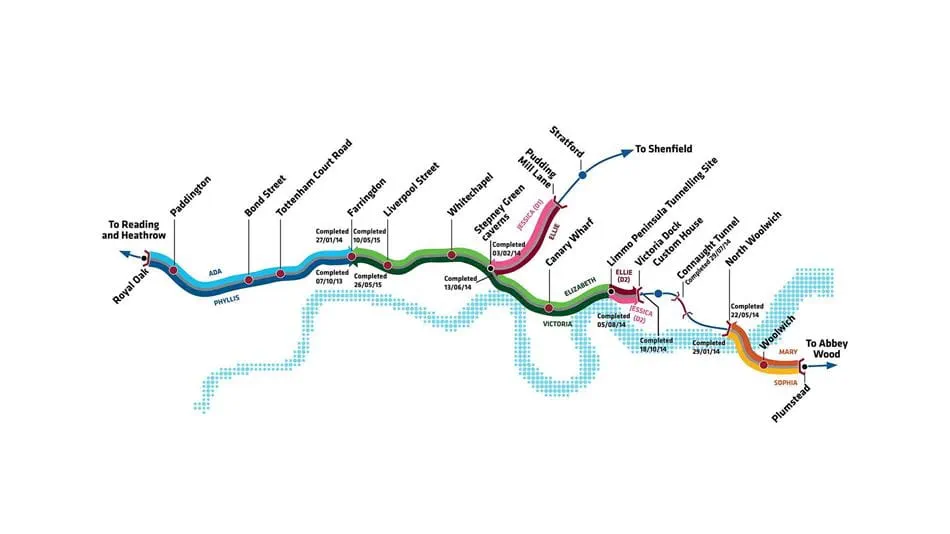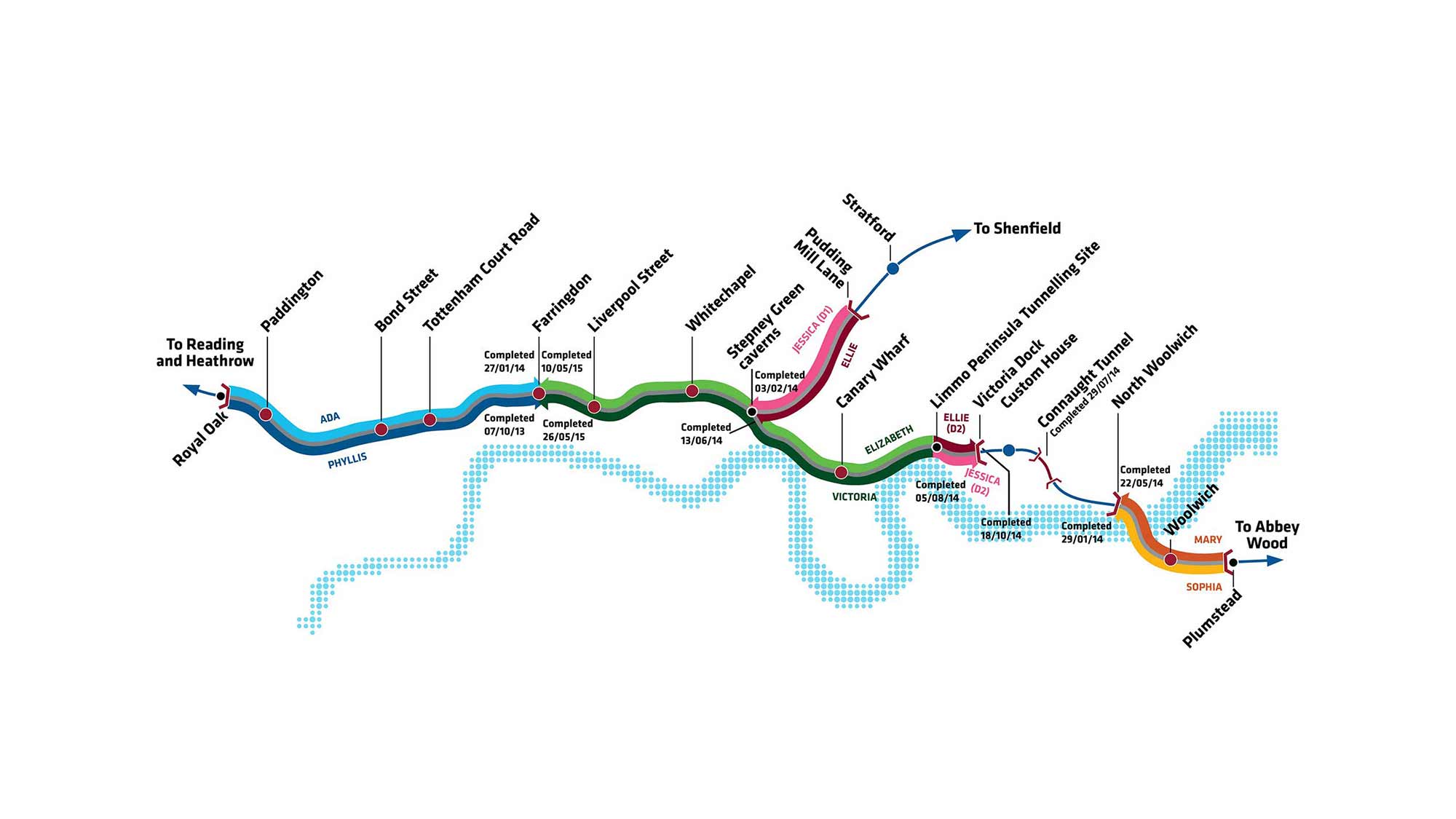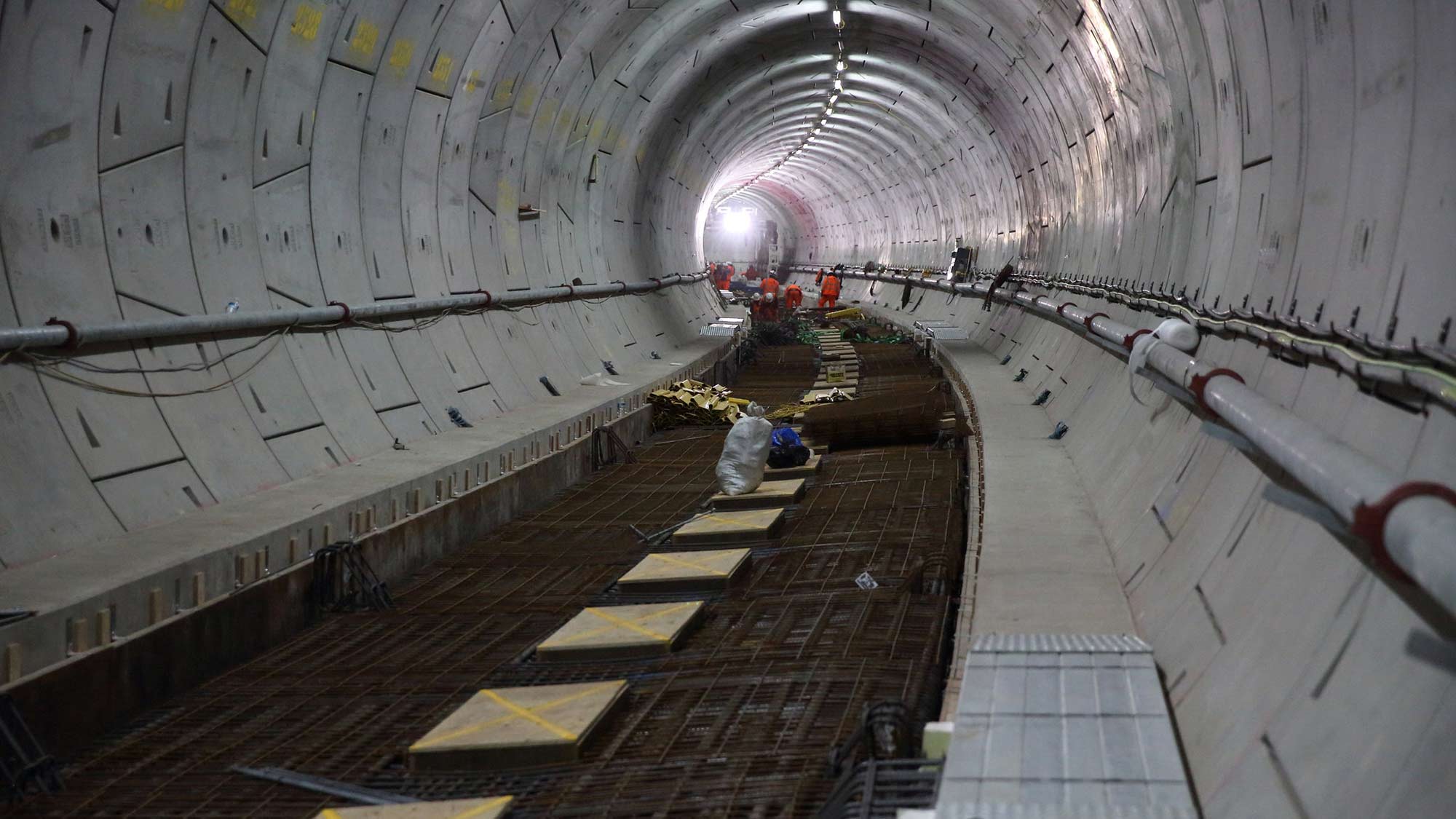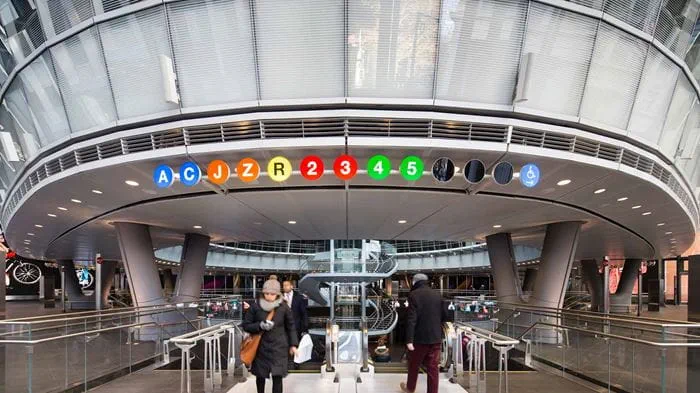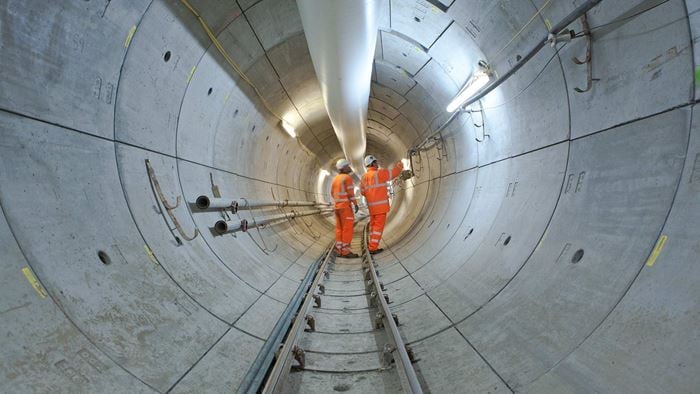The Elizabeth line (formerly Crossrail) is one of Europe’s largest railway infrastructure projects. Providing rail services from Reading and Heathrow to the west of the capital, to Shenfield and Abbey Wood in the east, it will increase central London’s rail capacity by 10% and directly link Heathrow Airport, the West End, the City of London, and Canary Wharf.
With London’s subterranean environment congested by building foundations, tunnels, sewers and other structures, creating new underground tunnels for the line was no easy engineering challenge. How can you tunnel through the heart of one of the world’s busiest cities without interrupting people’s daily lives above ground?
In joint venture with Atkins, we designed the 42km of new tunnels under central London that were constructed in just over three years. Our work included the detailed design of the tunnels as well as an assessment of the impact that such significant tunnelling and excavation works could have on surrounding structures. The JV also designed the Tottenham Court Road, Custom House and Woolwich stations, and Plumstead sidings for Crossrail Ltd.
Project Summary
42km of new tunnels created under London
1,000tweight of each of the 8 tunnel boring machines used
17,000structures assessed above ground
Shaping major infrastructure
Our involvement in Crossrail extends from the early 1990’s, when we undertook the geotechnical site investigation for the entire route.
After a lull in the project, from 2006 to 2009, we updated the proposal for the section between Royal Oak and Farringdon, where the existing National Rail services will enter the tunnels on the western section of the route. Working with Atkins, we achieved significant cost reductions by simplifying the underground connections and refining the scope of Paddington, Bond Street and Tottenham Court Road stations.
Learning from our work on HS1, we helped develop the tunnelling strategy, reducing the number of tunnel boring machines required. We avoided the need for an underground junction at Stepney Green by changing the boring direction along the route. By eliminating this junction, we helped save £20 million and reduced the health and safety risks for various construction teams needing to work in a confined space.
Using data to deliver new insights
Creating 42km of giant bored tunnels underneath the busy streets of London, navigating through its congested subterranean world of building foundations, London Underground tunnels and many other structures and utilities, comes with huge risks.
Tunnel Boring Machine (TBM) Elizabeth is lowered into the ground. @Crossrail Ltd
When we began looking at the best alignment for the tunnels, it was a stark reminder of the questions that needed to be answered. What will we find underground? How will the tunnelling effect structures and people above ground?
Early on, we identified the need for a comprehensive digital GIS platform to manage the vast amount of geotechnical, land and site data that would be involved. Using this data, we navigated major infrastructure and utilities below ground, identifying possible obstructions during tunnelling, while flagging buildings that were at greater risk above to refine the tunnel alignment.
This then novel approach is now common practice and proved its value on this immensely complex scheme. Crossrail built on these foundations and developed the platform further into a BIM model of the entire line, becoming in effect, a ‘digital railway’.
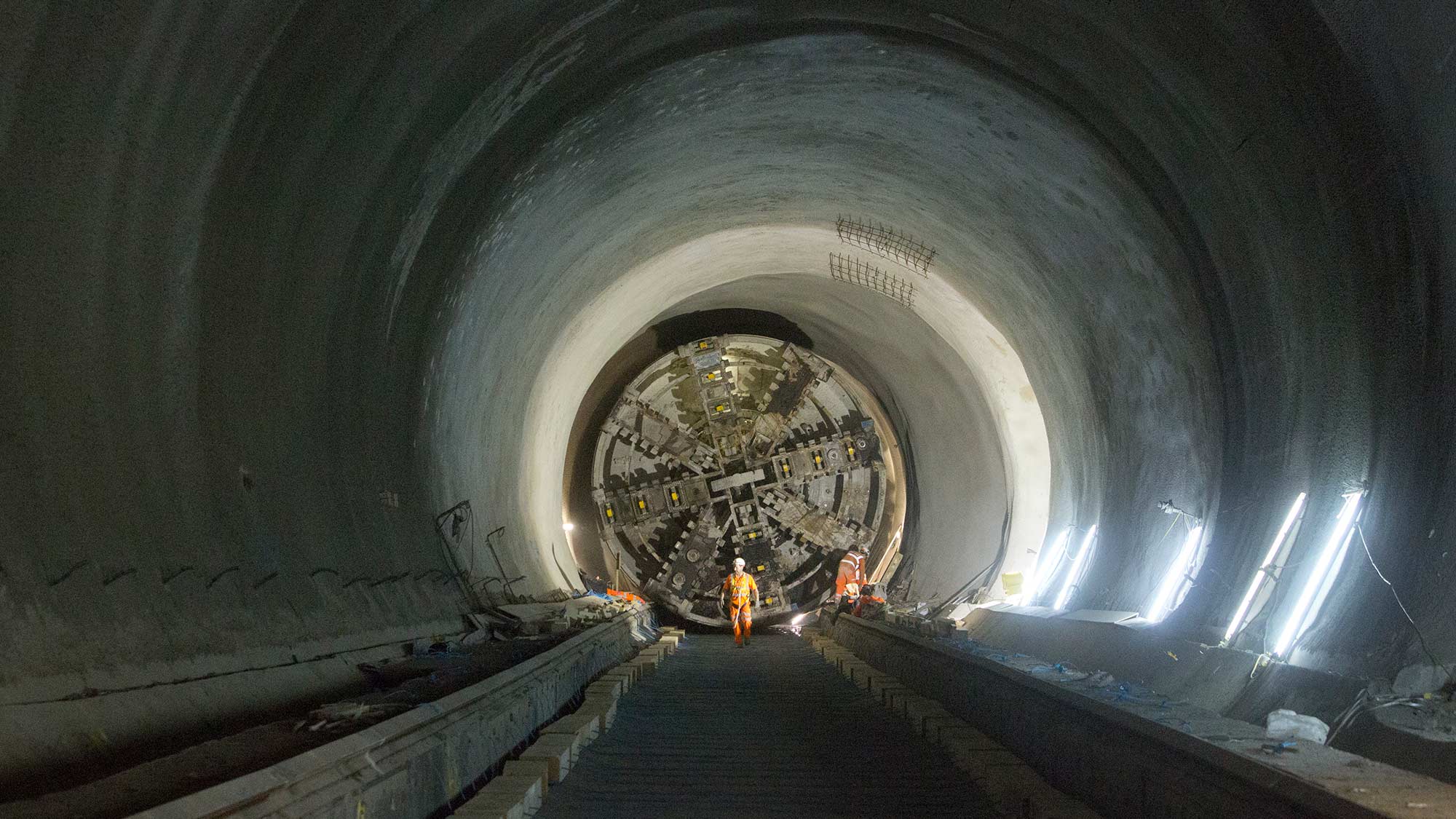 ;
;

